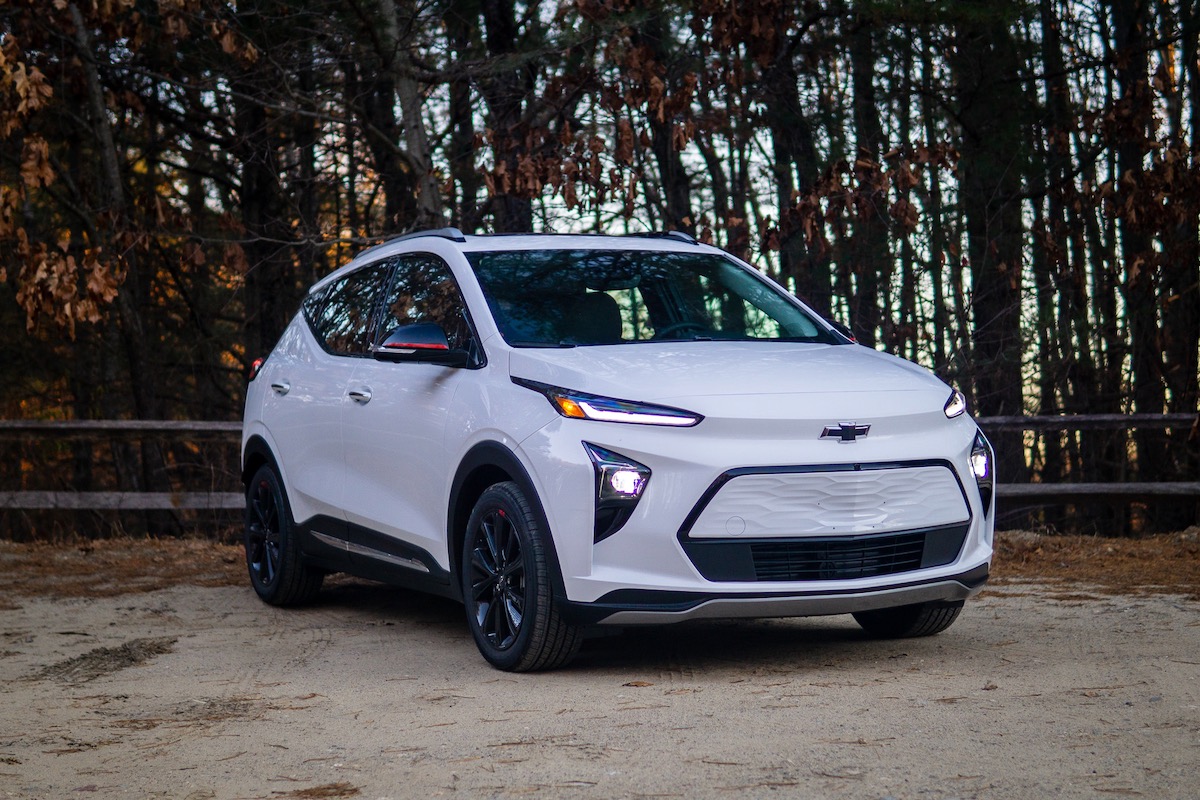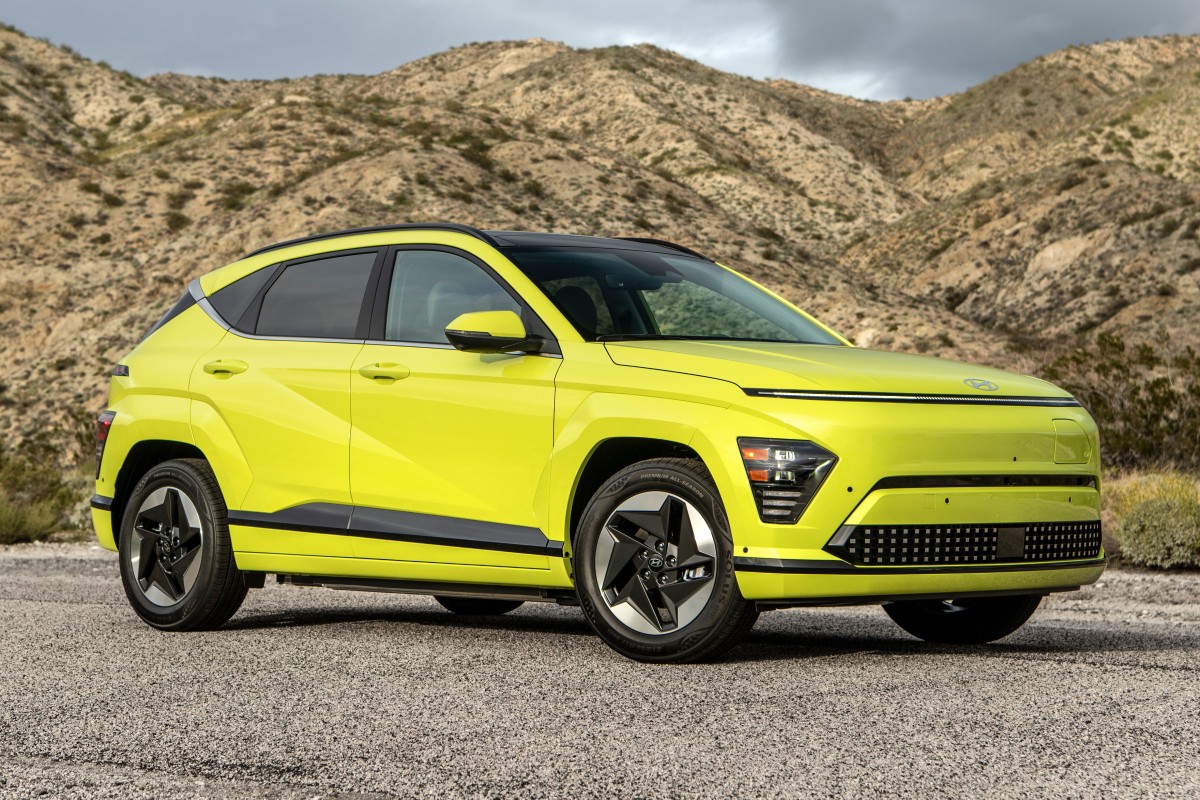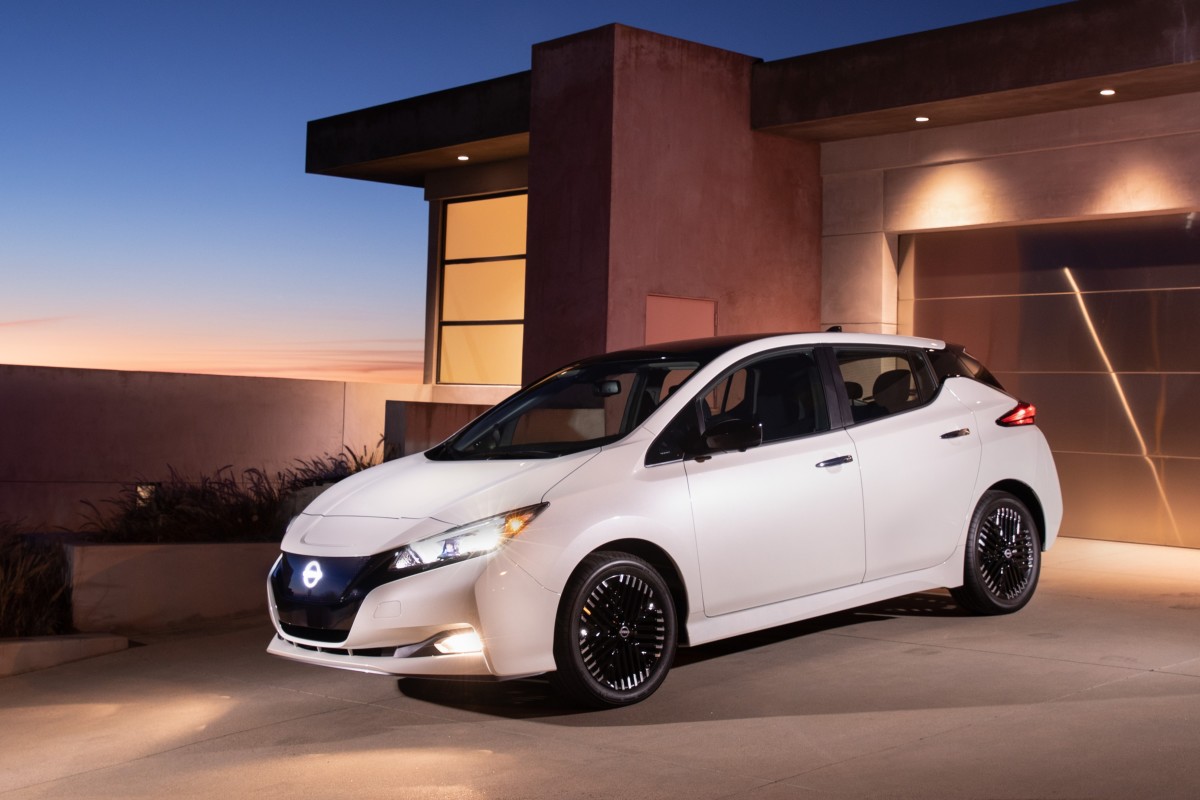With inflation cooling off and the supply of new cars heating up, you’d think it’d be a great time to grab a deal on a new electric car. In reality, the EV landscape is still a mixed bag. While the supply of cars is up, automakers are still lagging on rolling out affordable electrics. And a few bargains from previous years, like the Ford Mustang Mach-E and Kia Niro Electric, now cost more than they used to.
That said, there’s still a group of solid choices available for less than $40,000, and we’ve compiled them here to help choose the one that’s right for you.
Complicating the situation are the new and seemingly ever-changing EV tax credit rules, which have stripped away the $7,500 federal tax credit that most EVs used to qualify for. While you should still check federal, state, and local incentives before you buy, the only vehicles on this list that presently qualify for these credits are the Chevrolet Bolt EV and Bolt EUV. Both are officially discontinued for 2024, but we’ve left them on the list because several thousand brand-new Bolts remain on sale as of the time of this writing.
They’re on their way out, but the Bolts represent the best value deal on the new EV market right now if you’re purchasing. If you’re leasing, however, the situation is different. Because leased EVs are owned by the lessor, they’re viewed as commercial vehicles and qualify for larger incentives, which could drive down the cost of your lease. Nor are they subject to many of this year’s new restrictions, so if you’re after slightly more expensive models than the ones you see here, like the Hyundai Ioniq 5 or Ioniq 6, Kia Niro EV, Toyota bZ4x or Subaru Solterra, leasing might be the way to go.
There’s also one notable addition to our list this year, the Tesla Model 3. Although you can only buy the base model for under $40,000 and only if you don’t count destination fees, Tesla has given the popular sedan a major refresh without appreciably raising its price.
Every Electric Car Under $40,000 in 2024
- Chevrolet Bolt EV
- Chevrolet Bolt EUV
- Hyundai Kona Electric
- MINI Cooper SE
- Nissan LEAF
- Tesla Model 3
- Volkswagen ID.4
Chevrolet Bolt EV
Both the Chevrolet Bolt EV and its latter-day crossover sibling, the Bolt EUV, were officially canceled in mid-2023, but that doesn’t mean you can’t still buy one. As of early 2024, there were still several thousand Bolt EVs and even more EUVs still seeking new buyers at Chevrolet dealers. After its battery pack issues were resolved and GM slashed the Bolt’s prices, both of the little EVs soared in popularity, with 2023 being their best-ever sales year. Seeing the trend, GM kept production going well into the end of the year despite plans for its factory space.
For now, these are two of the best electric cars on the market in terms of value. The subcompact EV features solid specs, a reasonable MSRP, and great range. It’s also fun to drive, space efficient, and utilitarian in the finest small car traditions. Plus, at an MSRP of $26,500, it’s an affordable vehicle by either gas-powered or electric standards. Fortunately, it also has 259 miles of range, which is still a good number by 2024 standards. The Bolt can fast charge at up to only 54 kW, which isn’t all that fast, but it is enough to reliably add 90 miles of range in 30 minutes.
The Bolt's 66-kWh battery pack and electric motor deliver 200 horsepower and 266 pound-feet of torque to the front wheels via a single-speed transmission. Torque is instant, and the powertrain delivers peppy acceleration and a lively driving experience, even at highway speeds, where there's plenty of power for passing and merging. As of this writing, the Bolt EV is eligible for tax credits under the new rules, too, so buyers who can take advantage of these credits are getting one of the cheapest new vehicles on the market bar none.
Research the Chevrolet Bolt EV
Chevrolet Bolt EUV
To expand on the utility and popularity of the Bolt hatchback, Chevy released the Bolt EUV in 2022. It offers the same feel and many of the same features, but it looks a little more crossover-like and offers some additional room. Sadly, it is also temporarily discontinued for 2024, but many thousands of brand-new 2023 EUVs remain available at the time of this writing, and like the Bolt EV, the EUV qualifies for the full $7,500 tax credit, reducing its starting $27,800 price tag even further.
The Bolt EUV gets a 65-kWh battery and electric motor with 200 horsepower and 266 pound-feet of torque driving the front wheels—the same as its smaller sibling. Like the smaller Bolt, the EUV is peppy and fun to drive, with plenty of room for adults in either row of seats. The brake regeneration system takes some getting used to, as maximum regeneration requires using a small lever on the steering wheel rather than setting it and forgetting it, but you get used to it quickly.
Range comes in at 247 miles per charge, which isn’t quite as much as the Bolt EV but is still respectable even by 2024’s ever-increasing standards. Like the Bolt EV, its fast charging rate is fixed at 54 kW, but its overnight charging times aren’t too bad. Again, the Bolt EUV is a solid deal and comparable in price to many of the cheapest gas-powered crossovers while offering much lower fuel costs over time. Top spec models also come with some desirable features, like GM’s Supercruise semi-autonomous highway driving system.
Buyers willing to wait may also be interested to know that the Bolt EUV will return with an updated battery pack for the 2025 model year.
Research the Chevrolet Bolt EUV
Hyundai Kona Electric
Like its gas-powered sibling, the Hyundai Kona Electric has been totally redesigned for 2024 with much bolder styling and a whole lot more room. Amazingly, despite being newer, bigger, and better in almost every way, the 2024 model actually costs fractionally less to start than its 2023 predecessor. The lineup is more complex, however, and the Kona Electric now comes with two different battery packs offering two levels of range and performance.
The base-model 2024 Hyundai Kona Electric SE, which starts at $32,675, bundles a 48.6-kWh battery pack with a 133-horsepower electric motor. It’s very affordable, but it offers only 200 miles of range and tepid performance. Stepping up to the mid-range SEL ($36,675) brings a 64.8-kWh battery pack and a 201-horsepower motor. With 260 miles of range and appreciably more oomph, this is the sweet spot in the lineup for value. The top-spec Limited comes with fancier features but starts well above $40,000, and it doesn’t add any more range or power. As in the previous generation, all are front-wheel drive (FWD).
The Kona Electric can also charge quickly, though not as rapidly as Hyundai's more expensive Ioniq 5 and Ioniq 6. A level 2 charger can juice the larger pack to full in just over six hours, and the smaller pack in five, while it can fast charge at up to 100 kW per hour, enough to replenish from 10% to 80% in under 45 minutes. Best of all, it’s useful. The backseat is much larger now, with up to 36.4 inches of legroom. There are 25.5 cubic feet of cargo space behind the backseat and 63.7 with it folded. The base version’s shortcomings notwithstanding, there’s plenty to like.
Research the Hyundai Kona Electric
MINI Cooper SE
A brand-new electric MINI is due later this year as a 2025 model, but until it arrives, the 2024 MINI Cooper SE will continue to offer the same jaunty, fun-loving personality it has since 2020. Yes, its short range is a limitation, and so is it’s very firm ride. Let’s get this out of the way immediately: with only 114 miles of range on a charge, the SE is the shortest-range EV on the market now that the Mazda MX-30 has been discontinued. But if most or all of your driving is local, like most Americans, the Cooper SE is lots of fun and very efficient.
That ride is only a consequence of this tiny car’s short wheelbase and responsive handling, but those traits also make it genuinely fun to drive, on a road or even on an autocross course. It preserves nearly all of the formula of the gas-powered MINI Cooper hardtop while offering lower energy costs and a few charms of its own. Plus, by EV standards it’s affordable, with even the highest trim coming in well below $40,000 to start.
The Cooper SE features 181 horsepower and 199 pound-feet of torque, FWD, and a single-speed automatic transmission. The car can scoot from zero-60 mph in 6.9 seconds and its small, low stature makes it feel much quicker than that. It can reach 110 miles on a charge, which isn't much, but its fast-charging capabilities allow it to recover its entire battery pack in 24 hours using a 120-volt outlet. A full charge on a 240-volt charger will take just about eight hours, and a Level 2 home charger can do the job in around four hours. The 2024 MINI Cooper SE starts at $30,900.
Nissan LEAF
The Nissan LEAF is an old-timer in the world of electric vehicles, as it was the first mass-market electric car on sale over a decade ago. It's still a strong contender, but despite a major update in 2017, its star has faded over time as more automakers get into the EV game with big investments in tech and powertrain design. Nissan itself offers a more modern EV, the Ariya crossover, but it starts at well over $40,000.
The LEAF may be old hat, but its low price still means there’s some appeal. Plus, there are now companies making adaptors for its antiquated CHAdeMO charging port. The LEAF is the last U.S.-market vehicle to use this fast-charging standard, which means that it can sometimes be hard to find chargers in the wild because the more popular CCS and NACS chargers dominate, but that could be less of a problem with an adaptor.
The base-model LEAF S ($28,140) features an electric motor and a 40-kWh battery with 147 horsepower and 236 pound-feet of torque. This model only has 149 miles of range, which for a mainstream EV in 2024 is way below average, though as with the Mini SE, it’s still better than the departed Mazda MX-30. The LEAF SV features a 62-kWh battery that makes 214 horsepower and 250 pound-feet of torque, with 212 miles of range. That’s still well below average, but more useful for many drivers. The counterpoint is that the SV Plus models start at $36,190, well above options like the Kona Electric and Chevy Bolt EUV. Nor does the LEAF qualify for any tax credits this year.
Tesla Model 3
The 2024 Tesla Model 3 has gotten a major refresh without getting more expensive, and it comes in just under the wire at $38,990 to start (sans delivery fees) at the time of this writing. Notably, Tesla prices can and do change with regularity, but the base-grade Model 3 is the company’s most affordable vehicle and will likely stay that way. Sadly, despite being American assembled, the components within the updated Model 3 mean it no longer qualifies for tax credits if you’re purchasing new. There are also two more expensive Model 3s, the Long Range and the Performance, but they cost a good deal more.
Like the larger Model S, the Model 3 has sharp handling, familiar styling, and a futuristic, minimalist cabin. The cabin is dominated by a large central touchscreen that replaces the conventional instrument panel and controls, and for 2024 Tesla has even removed the turn signal and shifter stalks. While cool to look at, stuffing so many functions into a central screen can be annoying in daily driving, and there’s certainly a steep learning curve. Nor are Apple CarPay or Android Auto available. Tesla has also given the interior materials a major upgrade for 2024, answering one of the prime criticisms of earlier Model 3s.
Every model now comes with redesigned standard heated-and-ventilated front seats, sound-insulated glass, and ambient lighting, which makes the Model 3 feel more like other cars in its price range. The back seat is still relatively small, but the 3 is a cargo overachiever, with nearly 20 cubic feet of rear trunk space and a useful 3.1 cubic foot frunk (front trunk) as well as lots of bins in the cabin. The base-grade Model 3 is probably the nicest handling of the bunch, with a single electric motor driving the rear wheels. It’s quick, with a zero-to-60 sprint of just 5.8 seconds. It offers 272 miles of range and, of course, it can charge on the company’s comprehensive Supercharger network.
Volkswagen ID.4
Pricing hasn’t yet been announced for the 2024 model year Volkswagen ID.4, but it’s expected to have a starting price just under $40,000. The popular electric SUV gained a new base model in 2023 that started at $38,995, and while the 2024 model is going to boast a variety of improvements, this low-end version will remain and probably won’t get most of those new updates. Even so, the sleek ID.4 has a modern design and a spacious and comfortable interior. Its 10-inch touchscreen infotainment system is stunning (if finicky to use), and Apple CarPlay and Android Auto are standard if you don’t care for Volkswagen’s native system.
The entry-level ID.4 Standard sneaks under $40,000 thanks in part to its smaller, 62-kWh battery pack, rear-wheel-drive (RWD) layout, and 209-miles of driving range. Spend more, and a Volkswagen ID.4 can go as far as 292 on a charge for 2024, and you can get one with all-wheel drive (AWD), but in 2024 that will mean spending at least $45,000. Luckily, all ID.4 models offer relatively fast charging capabilities, allowing drivers to charge from 10% to 80% in just 38 minutes.
While the base model ID.4 does lack range, its roomy interior, price and equipment levels are compelling, including standard synthetic leather upholstery and heated front seats. Buyers might also consider seeking out 2023 models, of which many leftovers can be purchased below MSRP.







